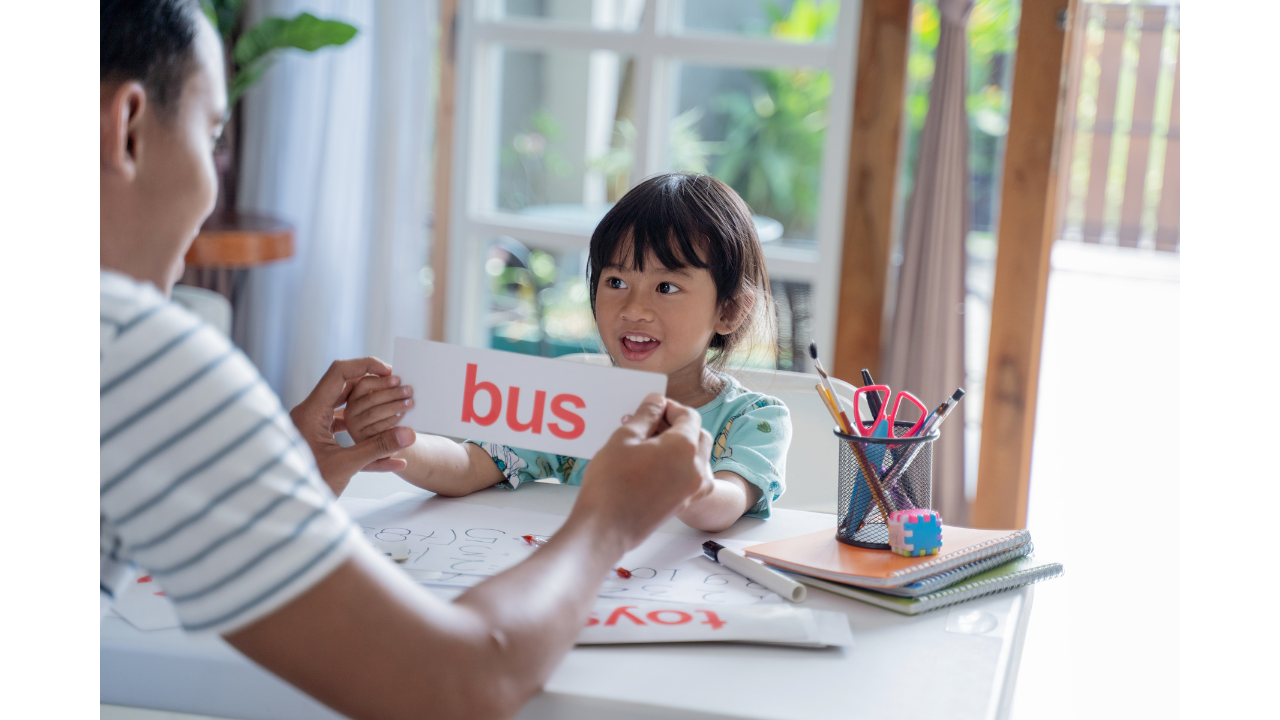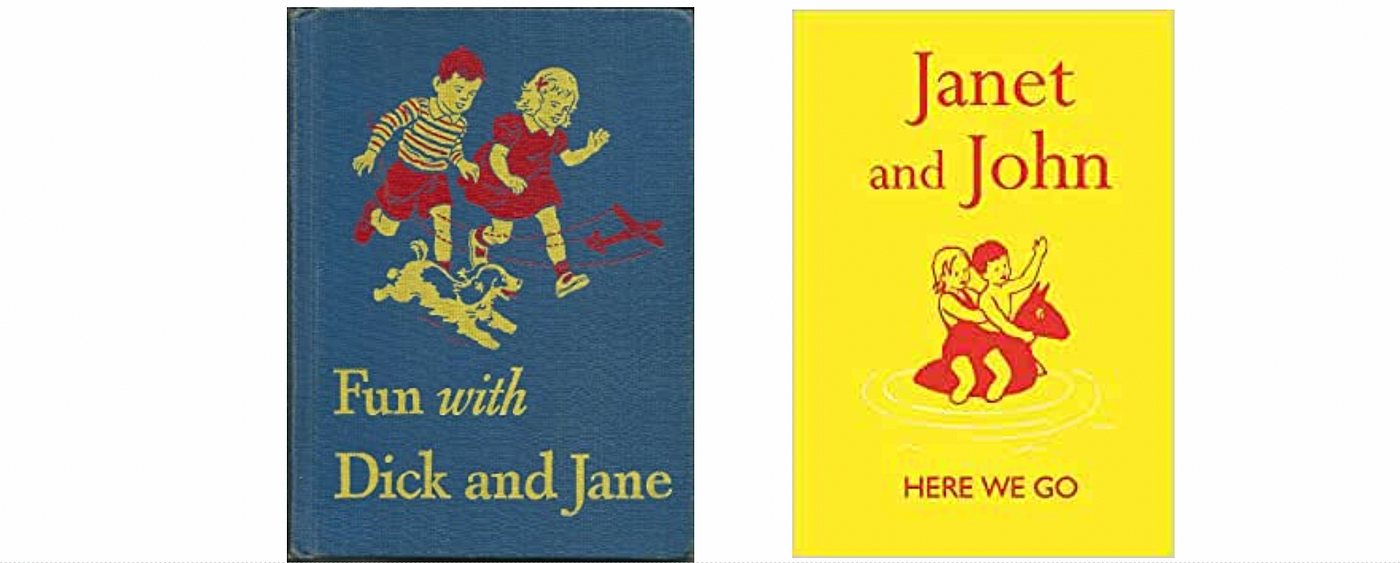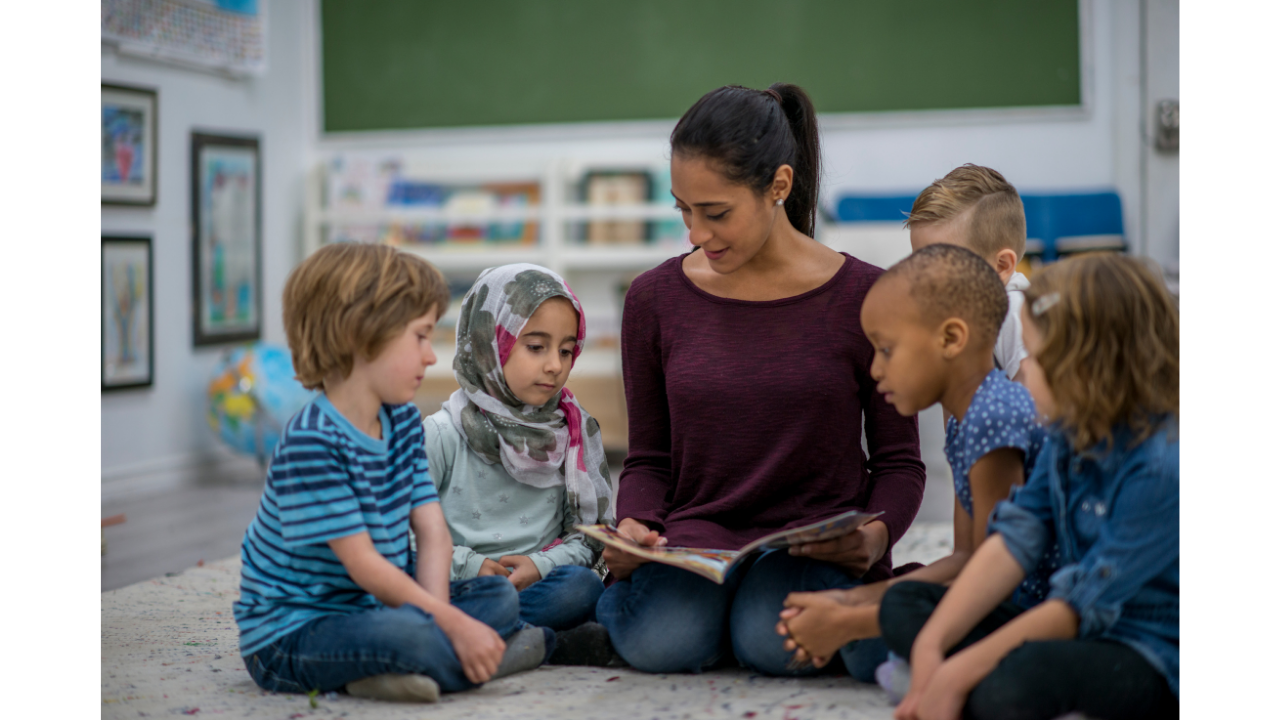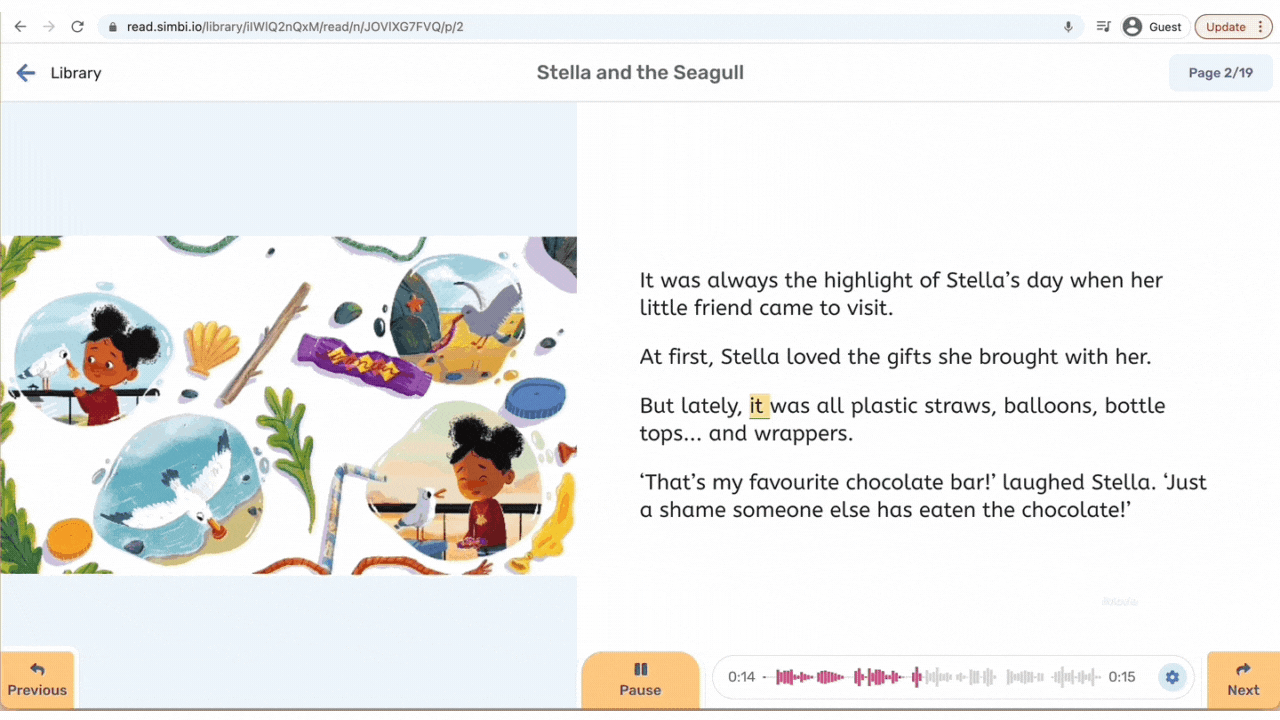What Is Ending the Reading Wars Syaing
Reading Wars and "The Science of Reading"
Reading Instruction through the decades
"Today a reader, tomorrow a leader" — Margaret Fuller

Teaching children to read is undoubtedly the nearly important and challenging responsibility an early primary teacher will face. Simply just how do children learn to read and what is the best method to teach them? While the fence in methodology and pedagogy volition likely go on, what we can all agree on is that teaching reading is not a "1 size fits all" approach and not 1 method works for every kid.
I've been in the field of simple education for over 25 years. In that fourth dimension, I accept witnessed, start hand, what is known in the education world as " The Reading Wars " — the back and forth debate over which method is "the best" one to teach our students how to read. Since the 1980s, in that location has been much fence betwixt supporters of explicit phonics instruction and those who favor a whole-language arroyo. In my years of didactics, I take seen the reading instruction pendulum swing back and forth between these two approaches numerous times, sometimes swinging completely to one side or the other, other times landing somewhere in betwixt. With each dramatic swing, there is a buzz followed quickly past a new curriculum, a new glossy box of shiny objects, and a complete shift in the mural of reading instruction. Later on a flow of consequent calm over the past 10 years, at that place is a new buzz in the air… (drum roll, please!)… The Science of Reading!
Just what is the Science of Reading and why all the buzz? Well, before I reveal what I've learned about "SoR" (now you know something is "hot" if at that place is an acronym for it!), I thought it might be helpful to expect dorsum on some of the most well-known methods of reading instruction over the past 50 years to give you some context about where we have come from and where we are heading.
WHOLE WORD METHOD — mid 1960's — 1970's
This is Janet.
This is John.
Come across Janet run.
See John run.
Become, Janet! Run, run, run!
Go John! Run, run, run!
If you recognize this, you likely went to elementary school when I did in the late lx'south or early lxx's (yep, I'grand that sometime!) and learned to read with Dick and Jane and Janet and John . These beginning readers were very repetitive and were compiled of an intentional sequence of elementary sight words. This method of reading whole words became known equally the "Look/Say" method, whose main purpose was to learn and drill sight words. (I can notwithstanding remember "flash card" drills in grade 1!) Once children learned (memorized) 30–l sight words, they were given repetitive readers, unremarkably referred to equally "basal readers", consisting largely of these words. Unknown words are often accompanied by a moving-picture show to help in identification. Dick and Jane illustrated basal readers were the most famous books of this period. The series was a great success and by the late 1960'southward both the Dick and Jane and Janet and John books were being used in seventy% of Northward American and British schools to teach reading. According to the times, memorizing sight words and reading them in context was "the best" way for students to learn to read.

WHOLE LANGUAGE METHOD — 1980's
By the mid 1970's the Janet and John books were outdated and some questions were beingness raised about a lack of diversity in the stories and the fact that they represented a rather "nuclear" white, heart-class family. New research and theories were besides being developed on how children larn to read better when engaged with "real" stories rather than the artificial, contrived stories establish in basal readers. Enter — " Whole Linguistic communication ", developed by Kenneth Goodman and Frank Smith in the late 1970's, a "top down" approach to reading where readers construct meaning of a text based on personal connections and experiences. The advantage of the whole language approach is that information technology exposed children to "real" literature and fabricated reading more than meaningful. Stories were read to the children, allowing them to engage and experience authentic literature and focus on comprehension and meaning-making. Writing was also emphasized in the early stages of reading and children were encouraged to write from their experiences and use invented spelling.
The problems surrounding the Whole Linguistic communication approach was that phonics and the systematic pedagogy of code and sound-symbol correspondence was suddenly rejected. Although phonics, decoding, and spelling were addressed in word written report and within the context of emergent writing, they were non explicitly or systematically taught. Unfamiliar words were identified, not past sounding it out, but by "asking somebody what the word is" — or past guessing what the discussion might be using the context. Whole linguistic communication was based on the idea that learning to read should be as easy and natural as learning to speak. Children would "discover" the necessary alphabetic character/audio relationships as they read books and expressed themselves in writing, using their invented spellings. Despite the lack of scientifically based research into the effectiveness of Whole Language, however, it spread throughout North America at an unprecedented pace.

Balanced Literacy — Guided Reading, Levelled Texts, Cueing System 1990's-2000'due south
Not surprising, after over 10 years of NOT didactics students how to read words, many couldn't! Reading is not every bit natural a process as speaking and immersing students in print and literature alone will non teach them how to read. So the reading pendulum swung dorsum and landed somewhere in the middle with what was referred to as "Balanced Literacy". Engaging students in authentic literature, focusing on meaningful reading experience was nevertheless at the forefront, only incorporating explicit, targeted instruction in phonics and phonemic awareness was dorsum on the tabular array.
Most significantly, Counterbalanced Literacy introduced a "levelled text" organization into reading didactics, allowing children to progress from uncomplicated to more complex texts as they developed more than skills. Reading assessments tools were introduced (DRA, Benchmarks) to determine what level a child was reading at. Teachers would and so match students to levelled books that were challenging enough for them to make progress. These texts focus on 'significant' and repeatedly utilize 'high frequency' words (said, where, out) and syntactic patterns.
Balanced Literacy focused on providing a variety of reading opportunities for students: shared, guided, partner, and independent reading. Reading groups, small-group instruction or guided reading were introduced, high frequency words memorized, volume rooms were filled with bags of levelled texts and reading assessments and running records were essential components of a balanced reading program.
In this balanced approach, students were taught what is known as a "cueing organisation", known as "MSV", which promotes attempting to read unfamiliar words by drawing from semantics (context clues, pictures, background noesis), syntax (use of language patterns), or graphophonic cues (sounding out words). The merits was that, since reading is more or less a guessing game, the purpose of reading instruction is to teach students effect strategies to deduce unfamiliar words by drawing from meaning, cognition of the alphabet, and knowledge of how English works.
When encountering an unknown word, students were taught to estimate, while asking themselves:
Does it make sense? (Meaning)
Does it sound right? (Structure)
Does it expect right? (Visual)
"Balanced Literacy" has been the foundation of the majority of Main classrooms for the past 10 years but simply recently, the winds have shifted and information technology appears a change is on the horizon.
The Science of Reading 2020
Information technology is hard to hear that something you've believed in and used successfully for years is non the all-time teaching method for your students. I am amid thousands of educators who successfully used a "Counterbalanced Reading" approach for the past 10–15 years. Word on the street now, however, is that it may not be doing the task. The statement is that reading is not a guessing game and educational activity young children to look at pictures, skip over words, or judge at words based on context may non develop advisable strategies necessary for reading proficiency.
So now what? The pendulum is nearly to swing again… lookout your head…
Make way for "The Science of Reading"!
Like for many of you, The Scientific discipline of Reading is a relatively new concept for me. In fact, it is just this past yr that I have caught the buzz. Permit me be articulate — I am not an expert in SoR. Just after a lot of reading, I take a clearer understanding of what it is and isn't.
First and foremost, the Scientific discipline of Reading (SoR) is not a program, a shiny object, or a "one size fits all" arroyo to reading instruction. The term "science of reading" refers to the wide torso of research that reading experts, particularly cerebral scientists, have conducted over the past xx years on how nosotros learn to read. SoR helps us understand the specific cognitive processes essential for reading proficiency: which skills are involved and what parts of the encephalon are at work in the procedure. (Now, I'thou all most metacognition and brain function so this is VERY appealing to me!)
When practice is called into question in pedagogy and begins to shift, it is due primarily to inquiry. And and then what does the research tell u.s.? Leading the way in this research is Stanislas Dehaene, whose 2009 quantum book "Reading in the Brain: The New Science of How We Read" is among the almost referenced books I encountered. Dehaene, a major advocate of systematic phonics instruction, says:
"The goal of reading education is articulate. It must aim to lay down an efficient neuronal bureaucracy, so that the child tin recognize messages and graphemes and easily turn them into speech sounds." (Dehaene 118)
The SoR research strongly believes that the well-nigh bones first steps to becoming a reader are phonemic sensation (agreement sounds in spoken words) and understanding phonics (knowing that letters in print correspond to sounds). Research shows that students acquire to read when they are able to identify messages or combinations of messages and connect those messages to sounds. (Of course, comprehension and attaching significant to those words is equally of import.) If a child doesn't primary phonics, they are more probable to struggle to read. That's why researchers are proverb that explicit, step-by-step, systematic instruction in phonics is essential. One time they acquire how to decode words, they tin can then apply that skill to more challenging words and ultimately read with fluency and proficiency.
What surprised me, equally I learned more most the Science of Reading, is that it is not JUST nigh education phonics. It identifies and emphasizes explicit instruction in these essential reading skills:
- Phonological awareness — spoken language, identifying words that rhyme, recognizing ingemination, syllables, segmenting a sentence into words
- Phonics — intense, and systematic instruction in letter-audio correspondence
- Fluency — read aloud strategies — pace, phrasing, punctuation, intonation.
- Vocabulary — word knowledge — understanding of words and their meanings
- Comprehension — comprehension strategies — predicting, summarizing, connecting, inferring, etc.
If you are thinking that this sounds very much like your electric current "Balanced Reading" program, you would be right. And so how is SoR different? Again, it comes back to the phonics instruction. The Scientific discipline of Reading arroyo believes that a prevention-oriented approach is more than effective than intervention and that systematic, explicit instruction for all learners is the key: "Operation is best when children are, from the very beginning, direct taught the mapping of messages onto spoken language sounds. Regardless of their social groundwork, children who do not learn this suffer from reading delays." (Dehaene 209)
Finally, the SoR believes that, along with a systematic phonics program, emergent readers need exercise applying their phonics skills with decodable texts — highly predictable, decodable texts with patterns and repetitions of controlled vocabulary.

These "decodables" oft sound nothing like natural everyday spoken communication and, like the Dick and Jane books, provide lilliputian opportunity for deep thinking. They practise, however, provide readers with opportunities to decode the words and apply the phonic skills they have learned. In contrast, many levelled texts are often anticipated, repetitive, and highly dependent on context and illustrations and then readers oftentimes don't rely on the impress or decode the words because they simply don't take to.
Now just in case that was a bit wordy for your liking, beneath is a summary of the different reading instruction methods explained above in a chart (I love charts!)

SoR in the Classroom
As mentioned, I am no good in the Scientific discipline of Reading, nor am I a scientist or a researcher. Just I am a teacher and ultimately, we all take the aforementioned goal: that students walk out of our classrooms improve readers than when they walked in. Achieving this goal means being informed, taking risks, asking questions, and being responsive to how our students acquire to make sense of print. And they won't all brand sense of impress in the same style: some may succeed more with leveled texts while others may acquire best with decodables; some may be natural meaning makers, while others crave more explicit comprehension instruction.
Has the pendulum started to swing? I would say yes. But change is good. And if nosotros tin can "bring with the swing" some new cognition of all that has come before the SoR movement, we are improve equipped to make informed decisions about what we tin do to support our start readers. Above all, the primal is "residual". We know that there will ever be a wide range of readers in our classrooms and that there is no one arroyo that works for all of them. The best reading teachers are informed, responsive, and take the time to reflect and refine what they know works best for each student. As we have learned, SoR isn't completely new and if you have been post-obit a Counterbalanced Literacy approach, it may take but a few small, manageable, intentional shifts in your practice to make a big touch on your students' reading success.
SoR at Home (feel free to use this in your next letter home to families!)
"Reading aloud with children is known to be the unmarried most important activity for building the knowledge and skills they will somewhen crave for learning to read." — Marilyn Jager Adam
For parents of beginning and early readers who may wish to support their kid at home, here are a few suggestions:
- Read aloud to your child every solar day. Interacting with your child and a book is likely the almost important thing you tin can do to aid them become a reader.
- Read your child's favourite book over and over again. Use your finger to model tracking the words as you read. For books that children know well, invite them to employ their finger to follow along equally y'all read each give-and-take.
- Take reward of Simbi's Read Forth feature that highlights the words for children every bit they listen to a narrator read the story.

4. Collaborate with the story as you read. Pause, point to a picture or a folio and say, "That reminds me of …." or "I'm wondering why….."
5. Stretch out one word in a judgement. Ask your child to "drinkable their milk" simply say the individual sounds in the give-and-take "G-I-L-K" instead of the discussion itself.
vi. Ask your child to figure out what every family fellow member's name would be if it started with a "B" sound, 'S" sound, etc (ie Andrew — Bandrew, Candrew, Sandrew)
7. Read nursery rhymes. Once your child learns a few, get-go them and have your child say either the concluding word or the rhyming discussion.
viii. Sing "I Like to Eat Apples and Bananas" song — using the different vowel sounds. (here is a video link to the song: https://www.youtube.com/picket?v=r5WLXZspD1M )
ix. Play rhyming games in the car — "What rhymes with dig?" (wig, jig, fig, big)
10. Play letter versions of "I Spy" -
- "I hear with my little ear something that begins with B"
- "I hear with my little ear something that rhymes with _______"
11. Label things effectually the house with minor word cards to introduce your child to print — "door" "table" "chair"
Systematic Phonics Programs:
- Heggerty Phonics
- McCracken Spelling Through Phonics — 30th edition (an oldie but a goodie!)
- world wide web.ateachableteacher.com — Great website with recommended resources and games for phonemic and phonics skills
- five Shockingly Costless Phonics Websites for Kids
- Decodable books on Simbi! Looking for decodable books online? Check out our Decodables drove in the Simbi Library.
Recommended resources for exploring the Science of Reading:
- Reading in the Encephalon: The New Science of How We Read by Stanislas Dehaene
- Equipped for Reading Success by David Kilpatrick
- Essentials of Assessing, Preventing, and Overcoming Reading Difficulties by David Kilpatrick
- Phonics from A to Z: A Practical Guide by Wiley Blevins
- Shifting the Residuum — by Jan Berkins and Kari Yates
- Brain Words: How the Science of Reading Informs Teaching by J Richard Gentry
- Proust and the Squid: The Story and Scientific discipline of the Reading Brain by Maryanne Wolf
References:
https://hechingerreport.org/iv-things-yous-need-to-know-nearly-the-new-reading-wars/
https://world wide web.readingrockets.org/blogs/shanahan-literacy/what-science-reading
https://world wide web.readinghorizons.com/reading-strategies/teaching/phonics-teaching/reading-wars-phonics-vs-whole-language-reading-teaching
https://www.parkerphonics.com/post/a-brief-history-of-reading-education
https://www.breakingthecode.com/ten-reasons-3-cueing-ineffective/
https://journal.imse.com/what-is-the-science-of-reading/
https://hechingerreport.org/what-parents-demand-to-know-nearly-the-enquiry-on-how-kids-learn-to-read/
https://www.speechsoundpics.com/science-of-reading-cheat-sheet
https://world wide web.apmreports.org/episode/2019/08/22/whats-incorrect-how-schools-teach-reading
Burkins, Jan & Yates, Kari. 2021. Shifting the Balance: 6 Ways to Bring the Science of Reading into the Counterbalanced Literacy Classroom. Portsmouth, NH, Stenhouse

Adrienne Gear is B.C. teacher, literacy specialist, workshop presenter, and the author of seven books on reading and writing educational activity for elementary educators. She works for Simbi: Read for Skillful (simbi.io) as a content and curriculum advisor.
For more information about Adrienne or to purchase her books, visit her website at www.readingpowergear.com
Source: https://medium.com/readwithsimbi/the-science-of-reading-8631f5614a14
0 Response to "What Is Ending the Reading Wars Syaing"
Post a Comment